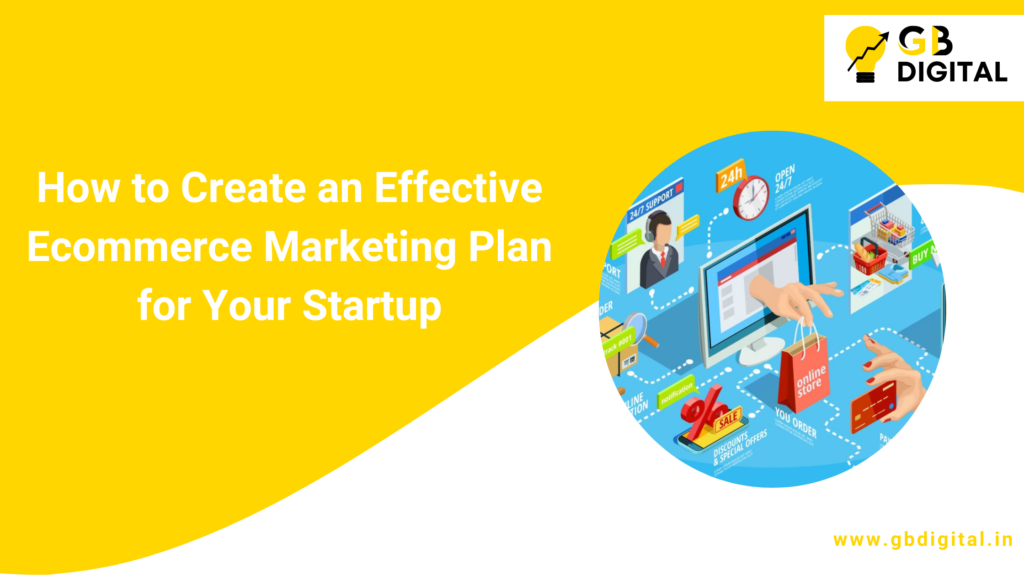In today’s competitive digital landscape, having an effective ecommerce marketing plan is essential for the success of your startup. Whether you’re selling products online or building a brand, a well-structured marketing strategy will help you reach the right audience, drive traffic, and increase sales. With the rise of ecommerce, startups must leverage the right tools, channels, and tactics to stand out in a crowded market.
This article will walk you through the steps to create a comprehensive ecommerce marketing plan for your startup. We will cover essential strategies, practical tips, expert insights, and future trends that can help you build a sustainable marketing framework.
1. Understanding the Importance of an Ecommerce Marketing Plan
Why Your Startup Needs a Marketing Plan
An ecommerce marketing plan acts as a roadmap for your business. It outlines your goals, target audience, marketing channels, and strategies for attracting and converting customers. Without a plan, your marketing efforts can become disjointed and less effective.

Benefits of an Ecommerce Marketing Plan
- Clear Objectives: A solid plan sets clear, measurable goals.
- Targeted Marketing: It helps you reach the right audience.
- Budget Management: Ensures you allocate resources efficiently.
- Consistency: Allows you to maintain consistent messaging across channels.
2. Defining Your Goals and Target Audience
2.1. Setting SMART Goals
When creating an ecommerce marketing plan, it’s important to define specific, measurable, achievable, relevant, and time-bound (SMART) goals. Whether you aim to increase website traffic, boost sales, or expand brand awareness, SMART goals provide clear direction and a way to measure success.
For example:
- Increase website traffic by 30% in the next 6 months.
- Generate 100 new sales through email marketing within 3 months.

2.2. Identifying Your Target Audience
Understanding your target audience is essential for an effective marketing strategy. Conduct market research to identify the demographics, behaviors, and pain points of your ideal customers. Utilize tools such as Google Analytics and customer surveys to gain insights into your audience’s needs.
- Demographics: Age, gender, location, income.
- Psychographics: Interests, lifestyle, values.
Once you have a clear picture of your audience, you can tailor your marketing messages to resonate with them.
3. Building a Strong Ecommerce Website
3.1. Optimizing for User Experience (UX)
Your ecommerce website is the cornerstone of your marketing efforts. A user-friendly, visually appealing, and responsive website can enhance the customer experience and increase conversions. Focus on:
- Mobile Responsiveness: Ensure your site works well on all devices.
- Fast Loading Times: A slow website can lead to lost sales.
- Easy Navigation: Make it simple for customers to find products and check out.
3.2. Implementing SEO for Ecommerce
Search Engine Optimization (SEO) is crucial for driving organic traffic to your website. Optimize product pages, meta descriptions, and category pages with relevant keywords. Conduct keyword research using tools like Google Keyword Planner to target search terms that potential customers are using.
- On-Page SEO: Optimize product descriptions, images, and URLs.
- Technical SEO: Ensure your site has clean code and fast performance.
4. Choosing the Right Marketing Channels
4.1. Social Media Marketing
Social media platforms like Facebook, Instagram, and Pinterest can be powerful tools for driving traffic to your ecommerce store. Create engaging posts, run targeted ads, and interact with followers to build a community around your brand.
- Instagram: Showcase visually appealing product images.
- Facebook: Use Facebook Ads to target specific demographics.

4.2. Email Marketing
Email marketing remains one of the most effective channels for ecommerce businesses. Build an email list of subscribers and nurture them with personalized content, promotions, and product recommendations.
- Welcome Series: Send a series of emails to new subscribers.
- Abandoned Cart Emails: Remind customers about items they left in their cart.
4.3. Pay-Per-Click (PPC) Advertising
Pay-Per-Click (PPC) ads can help you drive immediate traffic to your ecommerce website. Platforms like Google Ads and Facebook Ads allow you to set up targeted campaigns to reach your audience. Make sure to monitor your ad performance and adjust your budget to optimize results.
- Google Shopping Ads: Promote your products directly in search results.
- Retargeting Ads: Target users who have previously visited your site.
5. Leveraging Content Marketing for Ecommerce
5.1. Blog Content
Creating valuable content is a great way to attract organic traffic and establish your brand as an authority in your niche. Write blog posts that address your audience’s pain points, offer solutions, and showcase your products.
- Product Guides: Create comprehensive guides that help customers choose the right products.
- How-To Articles: Show users how to use your products with step-by-step instructions.
5.2. Video Marketing
Videos are an engaging way to showcase your products and tell your brand’s story. Platforms like YouTube and Instagram make it easy to reach your audience with product demos, tutorials, and behind-the-scenes content.
- Product Demonstrations: Highlight the features and benefits of your products.
- Customer Testimonials: Share real stories from satisfied customers.
6. Analyzing Performance and Adjusting Strategies
6.1. Tracking Key Metrics
To ensure your ecommerce marketing plan is effective, track key performance indicators (KPIs) such as:
- Conversion Rate: The percentage of website visitors who make a purchase.
- Customer Acquisition Cost (CAC): How much it costs to acquire a new customer.
- Customer Lifetime Value (CLV): The total revenue generated by a customer over time.
Using tools like Google Analytics and Facebook Insights can provide detailed insights into the performance of your marketing efforts.

6.2. Making Data-Driven Adjustments
Based on your metrics, make data-driven adjustments to your marketing strategies. For example, if a particular PPC campaign is underperforming, analyze the targeting, copy, or landing pages and optimize them accordingly.
7. Future Trends in Ecommerce Marketing
7.1. Personalization and AI
As technology continues to evolve, personalization and artificial intelligence (AI) will play a larger role in ecommerce marketing. AI-powered tools can analyze customer data and provide personalized product recommendations, improving the overall shopping experience.

7.2. Voice Search Optimization
With the growing use of voice assistants like Siri and Alexa, optimizing your ecommerce website for voice search is becoming increasingly important. Ensure your product descriptions and FAQs are written in natural language to capture voice search queries.
7.3. Influencer Marketing
Influencer marketing remains a powerful tool for ecommerce startups. Partnering with influencers in your niche can help you reach a larger audience and build credibility for your brand.
Conclusion
Creating an effective ecommerce marketing plan is essential for the success of your startup. By setting clear goals, understanding your target audience, and leveraging the right marketing channels, you can build a strong foundation for growth. As technology evolves, stay adaptable and embrace new trends to keep your ecommerce strategy ahead of the curve.
With a well-structured marketing plan, your startup can thrive in the competitive ecommerce landscape and attract loyal customers.
FAQs
What is an ecommerce marketing plan?
An ecommerce marketing plan outlines strategies to attract, convert, and retain customers for an online business.
Why is SEO important for ecommerce?
SEO helps drive organic traffic to your site, improving visibility and boosting sales without paid advertising.
How can I grow my ecommerce startup with limited resources?
Focus on organic marketing strategies like content marketing, SEO, and social media to maximize reach without overspending.
What are the key metrics for ecommerce success?
Key metrics include conversion rate, customer acquisition cost (CAC), and customer lifetime value (CLV).
How do I choose the right marketing channels for my ecommerce business?
Identify where your target audience spends the most time and focus on those channels, such as social media, email, or PPC ads.








